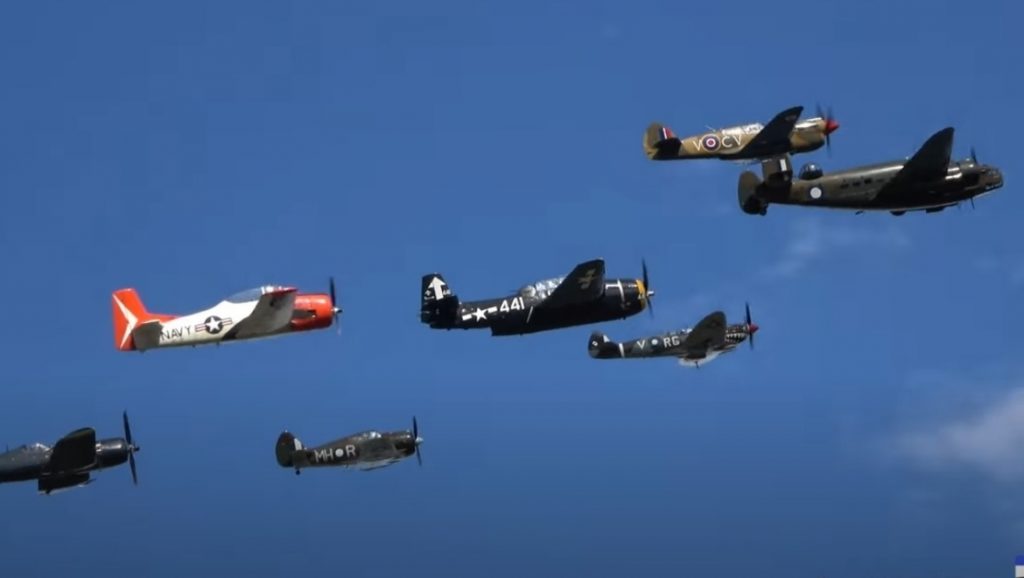
RAAF’s re-formed 100 Squadron flew aircraft including a Spitfire, Boomerang and Hudson at last weekend’s Hunter Valley Airshow.
The biannual event was postponed in 2020 but this year was able to go with a capacity of 10,000 on both days at Cessnock Airport, Pokolbin NSW.
In addition to the warbirds, the Air Force aerobatic team, the Roulettes, flew six Pilatus PC-21 aircraft from the Central Flying School at RAAF Base East Sale, Victoria.
“This has been a great experience. I have spoken to so many members of the public who were all interested in what we do and also expressed support for the ADF in the community and for Australia,” said Gunner Max Miller-Williams from 7th Battery, 9 Regt RAA based in Adamstown, NSW.
The Royal Australian Navy showcased the 723 Squadron EC135 helicopter as well as a static display of two drones from 822X Squadron, the ScanEagle and the S-100 Camcopter.
The Australian Army also displayed its Bushmaster Protected Mobility Vehicles (PMV) with crew from the 1/15th Royal New South Wales Lancers; an infantry section weapons stand and PMV provided by the nearby School of Infantry at Singleton; an 81mm mortar display from the 9th Regiment Royal Australian Artillery (9 Regt RAA), and a HX77 truck from Army’s 176 Air Dispatch Squadron.
YouTuber Nigel Woolley caught the moment, below, WWII aircraft performed three passes in a seven ship formation. The aircraft were a CAC Boomerang, T-28 Trojan, Grumman Avenger, F4U Corsair, P-40 Kittyhawk, Supermarine Spitfire Mk VIII and Lockheed Hudson.
Hunter Valley Airshow spokesman Andy McLennan said the attraction of watching warbirds was two-fold.
“It’s that unique blend of historical significance – these planes did something really important – and there’s that blend that this is a mechanical device that defies gravity, it flies, which was something not possible not that long ago.
“How can you not go ‘wow’. It’s amazing.”
In February, Australian Aviation first reported how the RAAF would re-form the legendary No. 100 Squadron to fly aircraft from the current heritage fleet in Temora and Point Cook.
The unit, disbanded in 1946, was formed from surviving personnel from the British RAF’s No. 100 Torpedo Bomber Squadron who had escaped from Malaya.
The first RAAF Squadron to be equipped with Australian-built Beauforts, No. 100 Squadron was deployed to Queensland in May 1942, where it conducted further torpedo bomber training and anti-submarine patrols.
Notable deployments also included flying reconnaissance and bombing missions against coastal shipping in Milne Bay, PNG, and carrying out the RAAF’s first Beaufort operation resulting in the crucial sinking of a Japanese merchant vessel.
Later in February, it was then confirmed that the former executive officer of Headquarters Air Academy had been appointed as the new commanding officer of 100 Squadron.
Wing Commander Philip Beanland said he felt “extremely privileged” to take the role for the unit that will have the motto “then, now, always” and its own unique badge.















